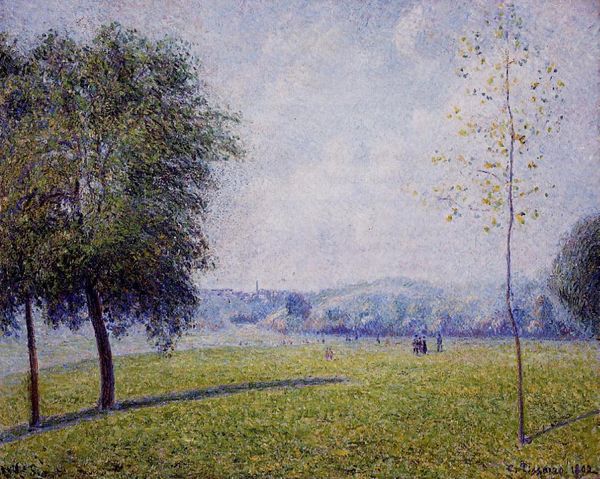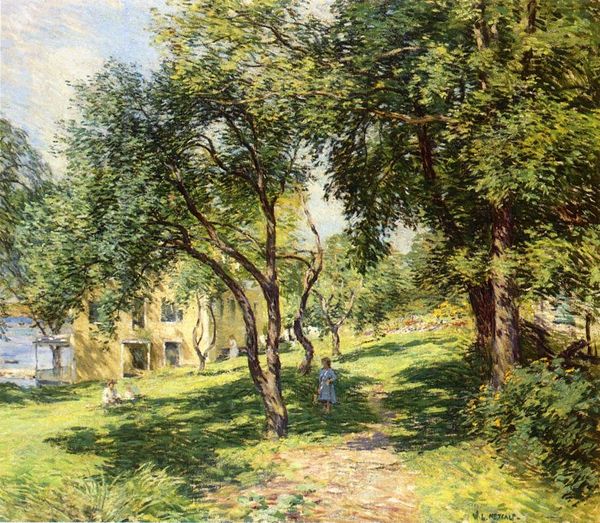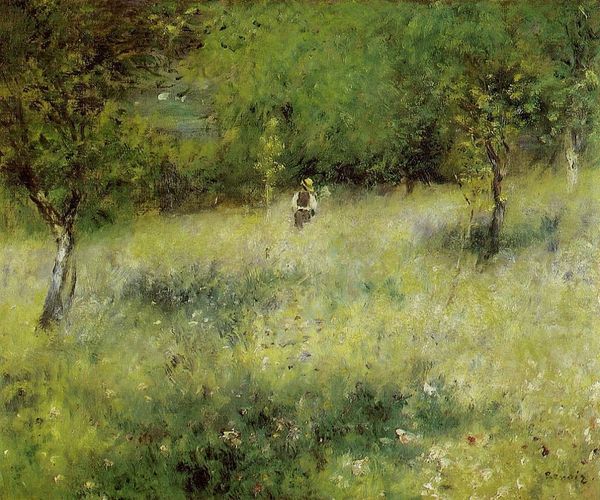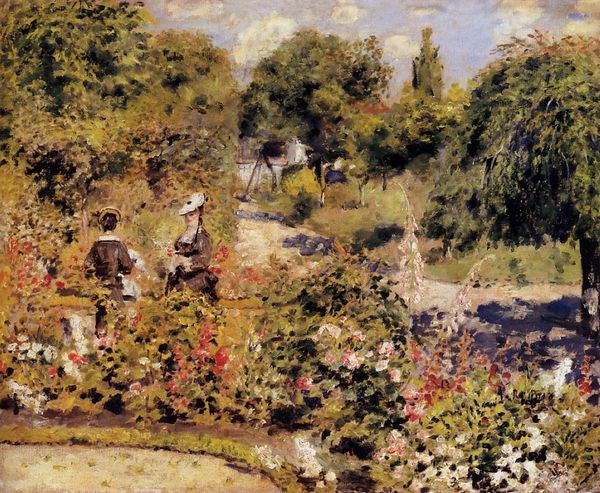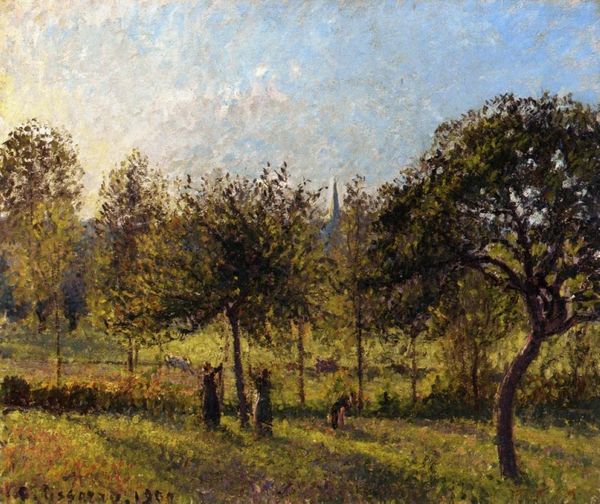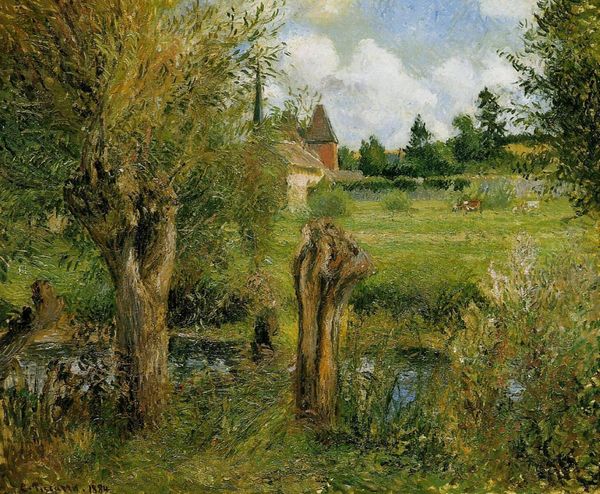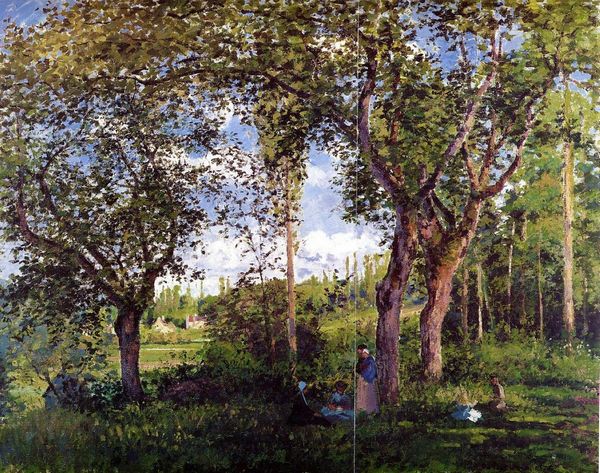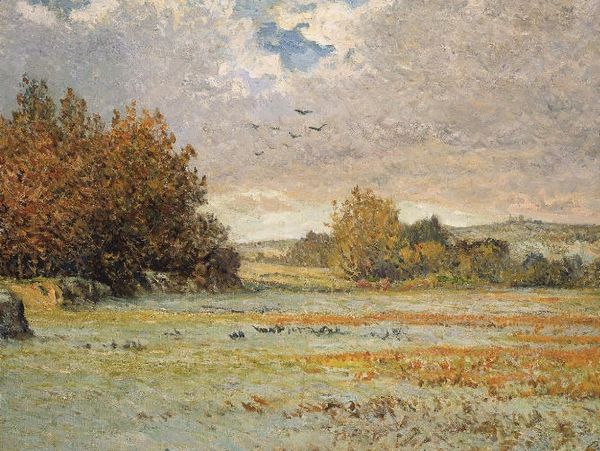
Dimensions: 54 x 65 cm
Copyright: Public domain
Editor: This is "The Goose Girl," an oil painting from 1900 by Camille Pissarro. The scene feels very idyllic and pastoral, with sunlight dappling the grass. What symbols do you see at play in a scene like this? Curator: The Goose Girl encapsulates several layers of potent symbolism. At its most immediate, we see the representation of labor and rural life. Can you envision how the goose, as a symbol, has migrated through different cultural contexts? Editor: Well, geese can represent watchfulness or vigilance. Sometimes foolishness. In fairy tales, they're often associated with simple folk or tests of character. Curator: Precisely! The goose is not simply an animal in the field. Its whiteness might suggest purity, simplicity. Its often noisy nature can represent community. Consider also the archetype of the "goose girl" found across European folklore. What inherent qualities are tied to this figure? Editor: Humility, perhaps, resilience? Maybe a hidden nobility? She's often disguised, or unaware of her true potential. Curator: Indeed. Pissarro, by depicting her, taps into that deep well of cultural memory. This unassuming painting becomes a conduit to larger narratives. Observe how light animates every aspect of the scene; this, too, might have symbolic meaning, indicating hope. What is, for you, the ultimate emotional takeaway from Pissarro's scene? Editor: I guess it makes me think about how even everyday scenes can carry so much historical and cultural weight. The Goose Girl isn't just a simple depiction, it's loaded with layers. Curator: Just so! The mundane contains the mythical, always. Examining those familiar images grants insight into ourselves.
Comments
No comments
Be the first to comment and join the conversation on the ultimate creative platform.



